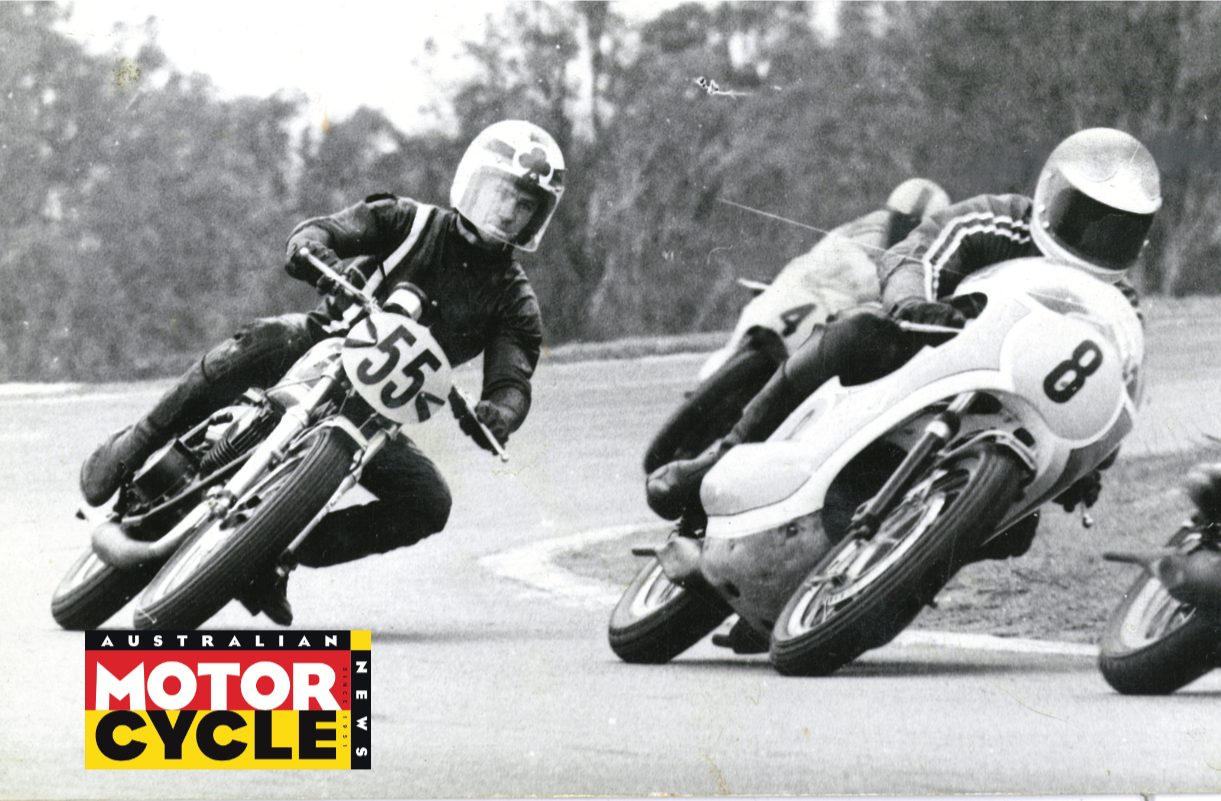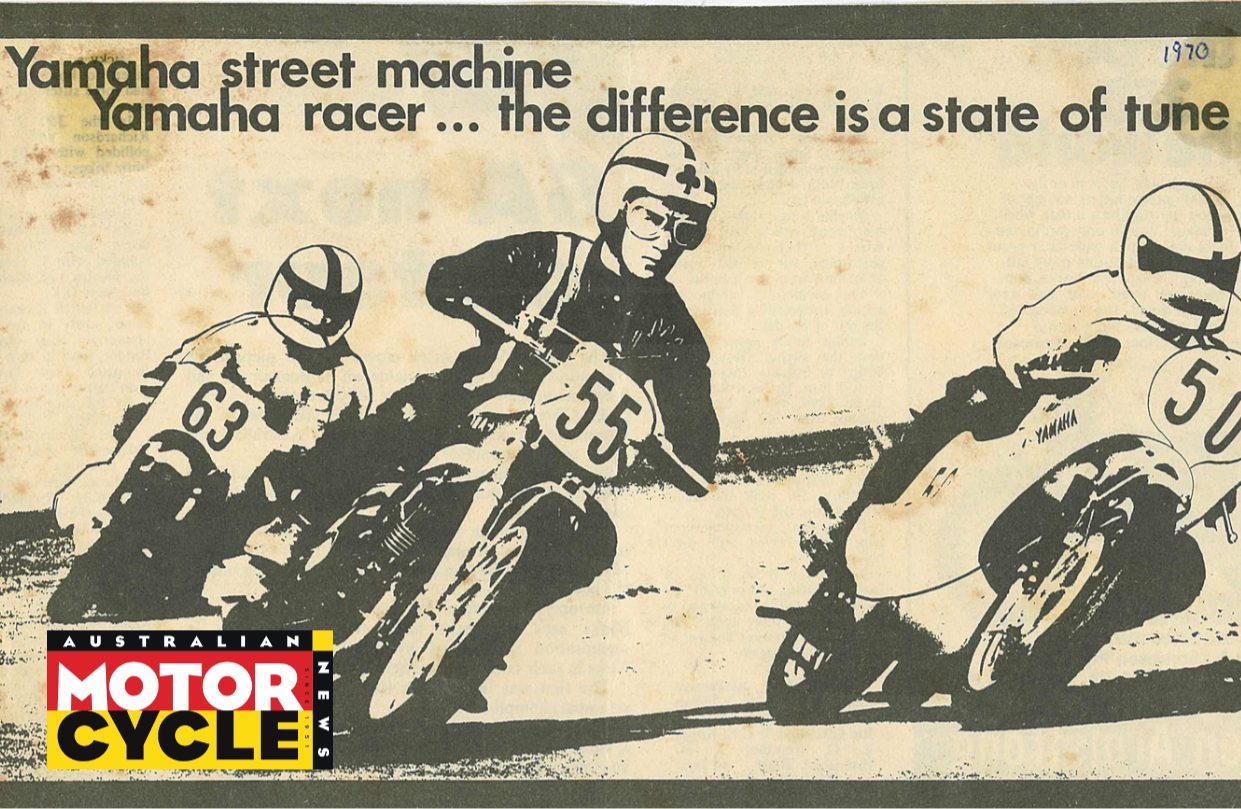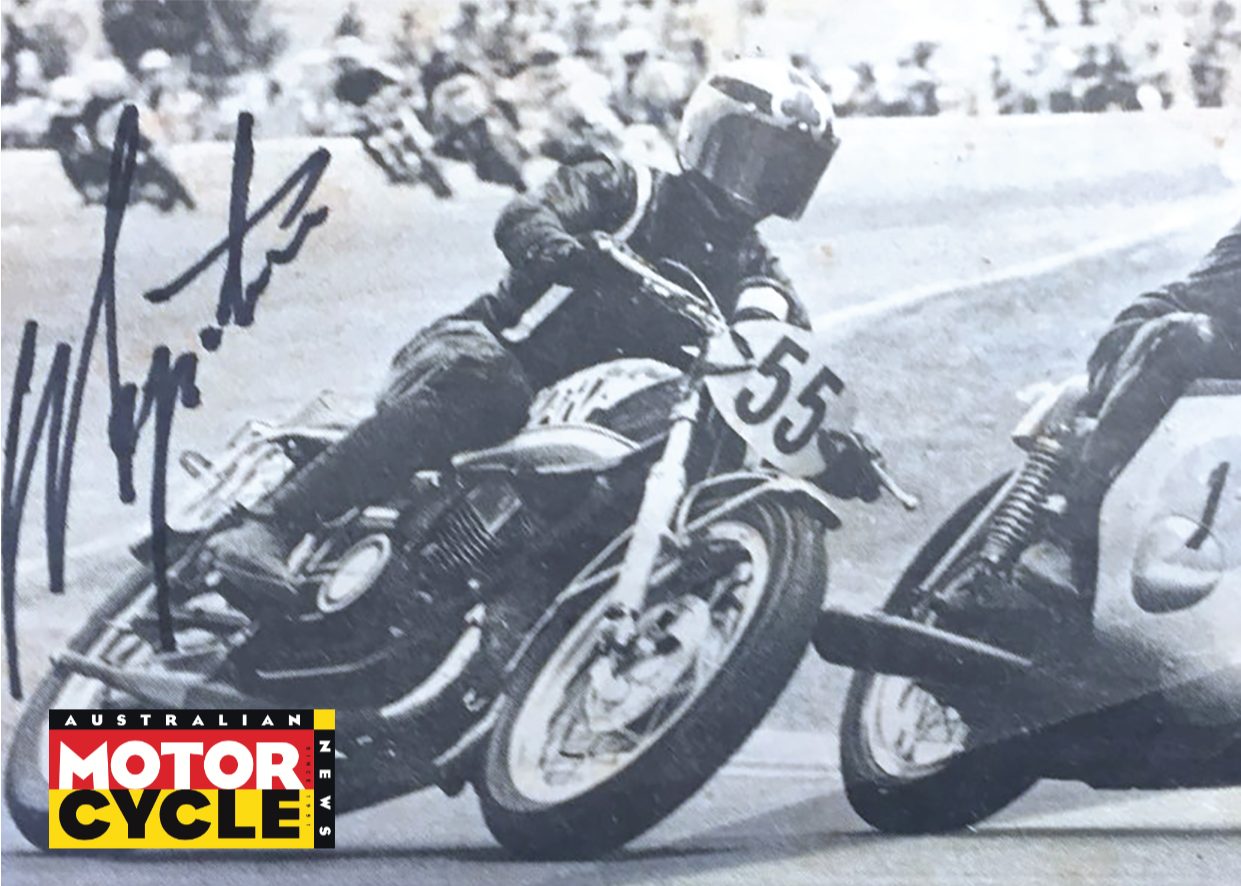Q-ships were decoy vessels with concealed weaponry used in war. In the early 70s, Tony Hatton’s Yamaha R5 350 was exactly that, and could be considered Australia's first Superbike.
What if we told you Australia’s first Superbike was a Yamaha R5 350? It was not known as a Superbike in the early 1970s. The category was Improved Touring. But Tony Hatton’s R5 placed fifth in the 1972 Australian Unlimited TT at Bathurst and all-up earned him one quarter of the price of a house!
He also won a New South Wales championship on it in the wet at Oran Park, beating Bryan Hindle on a pure racer Yamaha by half a lap.
In 1988 Hatton told me he regretted not taking the machine to England, given the splash Graeme Crosby in 1979 and Wayne Gardner in 1981 made with Moriwaki-Kawasakis the Brits thought were roadbikes, because of their lack of fairings and upright ergonomics.
Let’s start in 1970 and the Australian launch of the R5. Hatton was working at Paul Spooner’s shop in Condamine St in Manly. His racing licence had been suspended for six months for “tinkering”, as he put it, with his Yamaha YDS6 Production machine.

Looking like a fish out of water Tony Hatton took his R5 to fifth at the 1972 Bathurst 350 TT
“I wasn’t the only one,” he says. “Yamaha had just released the R5 and journos were not happy with it. John Goodwin from (NSW Yamaha distributor) McCullochs brought one to Spooners and asked if we could make it better while keeping it standard. Just make it run properly. I took it to Amaroo Park and discovered the jetting was way too rich and the ignition needed to be reset. Then I stripped and rebuilt it.
“John invited the journos to try it at Amaroo Park and then they loved it. Meantime, John crashed it there and broke his leg.
“The Improved Touring class was becoming popular and John had the idea that we create an Improved Touring R5, similar to what we had done with the YDS6. McCulloch Yamaha provided the bike and I started developing it.”
Soon after Hatton won the New South Wales 350 Championship in the wet at Oran Park.
“Bryan Hindle thought he was in front on his racing bike, but he was half a lap behind,” he says. “I did some more work on it and Yamaha began selling more R5s. Then people wanted R5 Improved Tourers, so we started doing the modification and fitting parts for Clubman guys.
“It became a very popular class and drew good crowds. Garry Thomas had an Improved Tourer too. They were easy bikes to build and maintain. We just fixed the things that gave me trouble.
“The beauty of that bike was that it started in about two steps, so you could beat the racing bikes off the line, but then they would grind you down. With some more work on the engine and suspension I won Improved Touring races against 750s. Once at Amaroo Park I almost won the Unlimited race, but made a mistake on the last lap and Hindle passed me.”
Yamaha advertised Hatton’s R5 with photos of it among Yamaha racers. It came into its element on short tracks like Amaroo Park and Oran Park.

Period advertising of the R5
“I made an agreement with Yamaha that the company would match any prize money I won dollar for dollar,” says Hatton. “After six months, Yamaha probably regretted the deal and wanted to renegotiate, but I told them that was not happening! The deal was it had to still look like a Production bike. It was like an early Superbike, before the term was coined and it gained me some recognition.”
In 1972 a dozen top motorcycle racers were invited to do demo laps at a Warwick Farm car-race meeting. The program notes on the riders said Tony Hatton’s bike “was about as standard as Pete Geoghegan’s (super) Falcon.”
Helping Hatton develop the R5 was one of Spooner’s friends from Wollongong, Andrew Duncan.
“We were all pretty lost in those days with two strokes, but Andrew helped with the exhausts, cylinder heads and such,” says Hatton. “He understood the mathematics of the engine and ignitions. Yamaha supplied the parts, but it did not need many.
“I ran a form of air cleaner, so the engine did not wear out. I did a whole season on one crankshaft, when the racing bike guys were rebuilding cranks all the time. And I used points ignition rather than CDI.”
On Easter Saturday 1972, Hatton was one of the stars of the Australian TT meeting at Bathurst, finishing fifth in the 350 TT and fifth again in the combined 500/Unlimited TT.

Racing the R5 against world champion Giacomo Agostini at the 1971 Calder meeting. Ago signed the photo in 2017
“Ginger Molloy was over from New Zealand with his H1R. He had been down to see Bert Flood in Melbourne and Bert put it on alcohol, which made it almost unrideable. Bill Horsman was up from South Australia with a Yamaha 350.
“The weather was so cold I thought it might hail and they kept us on the grid for ages to clean up the mess from a sidecar race. The racing bikes got cold and I was first off the line on the R5.
“I led over the line the first two laps and some of the racing bikes seized.
“Ginger passed me on the straight and got airborne, with his Kawasaki going into the biggest tank lapper, so I re-passed him. Then Bill passed me on the third lap and they went away.
“Racing Ginger even for a lap or two was great, just for that moment; a great dice. After the races Ginger bought me a beer and spilled beer on Bill after Bill beat him to win the race. ‘You won’t get that much space from me in Europe’, he told Bill.
“The one thing the R5 lacked was a close-ratio gearbox. It was good on short tracks but a problem on longer ones. In Malaysia, guys had five-speed Yamaha close-ratio boxes. The market in South-East Asia was such that Yamaha made special parts. We knew the part numbers and such, but you had to buy it through Yamaha and it did not come. We did not have the internet then. That’s what it was missing. With a close-ratio box and better tyres it would have been a winner. Better ratios mean you can go into corners faster and drive off them better.”

The racer-tuner still has a love of motorcycles
Based on Hatton’s success with the R5, Yamaha gave him a full 350 racer, but he struggled with injuries due to the bike seizing or stuck throttles.
“Lots of crashes that were not my doing,” he says. “I ended up converting it to a 250 and fitting a CDI ignition, and then it was a rocketship.”
Around the same time Ron Toombs joined Kawasaki. “He had a factory Yamaha 125 but he could not ride for two factories, so he told me I should take the 125 so it would not be destroyed by Yamaha or go into the wrong hands,” says Hatton.
“The bike was delivered to Spooners on a truck and they dropped it on the road at Condamine St, so I had to repair it. Ron said he had extra parts for it in his garage and gave them to me. Once I had that bike and the Yamaha 250 running as it should I won two Australian Championships in one year.”
Hatton went on to win some major one-off races, including the Arai 3 Hour at Bathurst and the Suzuka 8 Hours with Mick Cole, both in 1979. He rode France’s famed Bol d’Or 24-hour on a Hannan-Kawasaki Superbike in 1977 and with Ken Blake on an RSC Honda in 1979.
Post racing he prepared all manner of machines from Superbikes, pure racing machines and motocross bikes for a host of leading riders, and also mentored many riders.

John Goodwin, left, unwittingly started the R5 project
KIWI Q-SHIPS
ACROSS THE Tasman in the early 1970s there were some clever ‘Q-Ship’ machines created at Lawton & Boyle in Wellington and backed by Colemans of Wanganui.
Garry ‘Frizz’ Ellison served his apprenticeship at Lawton & Boyle. He recalls two Suzukis as well as a Triumph Bonneville 750 from Australia that Brian Martin raced, and a BSA 650 fitted with a 180-degree crankshaft.
“We had a Suzuki T500 known as ‘the Hinge’ and a Suzuki 315 that was bored out to accept Yamaha R5 pistons.
“Geoff Perry brought some Yamaha TR3 cylinders and heads back from Malaysia and we adapted those to the 315 crankcases. Geoff rode that bike at Wanganui in 1972 to beat Trevor Discombe on his Yamaha TR3. He was shocked.
“The same bike was entered for the street races at Porirua. There wasn’t room in the truck to take it there, so I rode it to the meeting. Bikes in NZ had to have number plates, so you could do that.
“On the way there I was sitting on about 85mph (135km/h) when a guy passed me on a Norton Commando. I dropped it back a gear and re-passed him at 105-110mph (170-175km/h) and did not see him again. Might have frightened the guy!
“We had a Suzuki 380 triple converted to a 350 as well, but that ran in a (racing) TR250 frame.”
CROSBY SPLASH
WHY DID Graeme Crosby ride a Superbike-style machine in a round of the British TT1 Championship at Brands Hatch in 1979? It was not his idea.
It came from his Superbike sponsor and mentor Ross Hannan. Moriwaki Engineering was crating a fully faired TTF1 machine for Crosby to ride at the IoM TT and English mainland races.
“We’re taking that bike too,” Hannan suggested, based on the thought it would work well on the Brands Hatch short circuit on 27 May. According to Hannan, Crosby said he was over Superbikes. But Hannan prevailed and Crosby finished second to Honda Britain’s Ron Haslam, earning instant recognition with the British motorcycle press and fans.
WORDS: DON COX PHOTOS: TONY HATTON & DON COX